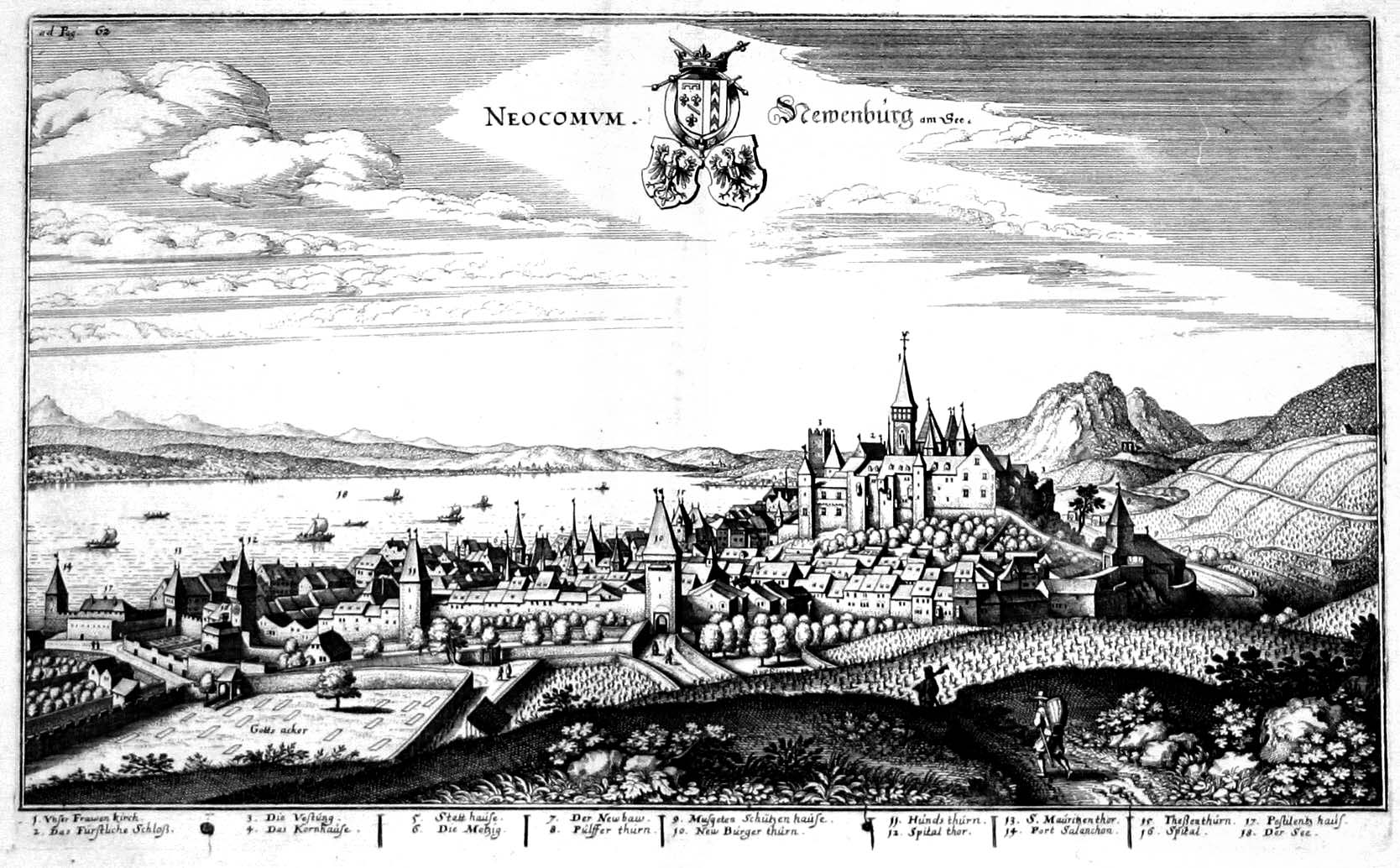|
Valanginian Life
In the geologic timescale, the Valanginian is an age or stage of the Early or Lower Cretaceous. It spans between 137.05 ± 0.2 Ma and 132.6 ± 0.2 Ma (million years ago). The Valanginian Stage succeeds the Berriasian Stage of the Lower Cretaceous and precedes the Hauterivian Stage of the Lower Cretaceous. Stratigraphic definitions The Valanginian was first described and named by Édouard Desor in 1853. It is named after Valangin, a small town north of Neuchâtel in the Jura Mountains of Switzerland. The base of the Valanginian is at the first appearance of calpionellid species ''Calpionellites darderi'' in the stratigraphic column. A global reference section (a GSSP) had in 2009 not yet been appointed. The top of the Valanginian (the base of the Hauterivian) is at the first appearance of the ammonite genus '' Acanthodiscus''. Subdivision The Valanginian is often subdivided in Lower and Upper substages. The Upper substage begins at the first appearance of ammonite species '' S ... [...More Info...] [...Related Items...] OR: [Wikipedia] [Google] [Baidu] |
International Commission On Stratigraphy
The International Commission on Stratigraphy (ICS), sometimes unofficially referred to as the International Stratigraphic Commission, is a daughter or major subcommittee grade scientific organization that concerns itself with stratigraphy, stratigraphical, geology, geological, and chronology, geochronological matters, worldwide. It is the largest subordinate body of the International Union of Geological Sciences (IUGS). The ICS is essentially a permanent working committee, working subcommittee, which meets far more regularly than the quadrennial meetings scheduled by the IUGS, when it meets as a congress or committee, membership of the whole. Aims One of its main aims, a project begun in 1974, is to establish a multidisciplinary standard and global geologic time scale that will ease paleontology, paleontological and geobiology, geobiological comparisons region to region by benchmarks with stringent and rigorous strata criteria called Global Boundary Stratotype Section and Points ... [...More Info...] [...Related Items...] OR: [Wikipedia] [Google] [Baidu] |
Annum
A year is a unit of time based on how long it takes the Earth to orbit the Sun. In scientific use, the tropical year (approximately 365 solar days, 5 hours, 48 minutes, 45 seconds) and the sidereal year (about 20 minutes longer) are more exact. The modern calendar year, as reckoned according to the Gregorian calendar, approximates the tropical year by using a system of leap years. The term 'year' is also used to indicate other periods of roughly similar duration, such as the lunar year (a roughly 354-day cycle of twelve of the Moon's phasessee lunar calendar), as well as periods loosely associated with the calendar or astronomical year, such as the seasonal year, the fiscal year, the academic year, etc. Due to the Earth's axial tilt, the course of a year sees the passing of the seasons, marked by changes in weather, the hours of daylight, and, consequently, vegetation and soil fertility. In temperate and subpolar regions around the planet, four seasons are generally ... [...More Info...] [...Related Items...] OR: [Wikipedia] [Google] [Baidu] |
Marine Transgression
A marine transgression is a geologic event where sea level rises relative to the land and the shoreline moves toward higher ground, resulting in flooding. Transgressions can be caused by the land sinking or by the ocean basins filling with water or decreasing in capacity. Transgressions and regressions may be caused by tectonic events like orogenies, severe climate change such as ice ages or isostatic adjustments following removal of ice or sediment load. During the Cretaceous, seafloor spreading created a relatively shallow Atlantic basin at the expense of a deeper Pacific basin. That reduced the world's ocean basin capacity and caused a rise in sea level worldwide. As a result of the sea level rise, the oceans transgressed completely across the central portion of North America and created the Western Interior Seaway from the Gulf of Mexico to the Arctic Ocean. The opposite of transgression is regression where the sea level falls relative to the land and exposes the form ... [...More Info...] [...Related Items...] OR: [Wikipedia] [Google] [Baidu] |
Genus
Genus (; : genera ) is a taxonomic rank above species and below family (taxonomy), family as used in the biological classification of extant taxon, living and fossil organisms as well as Virus classification#ICTV classification, viruses. In binomial nomenclature, the genus name forms the first part of the binomial species name for each species within the genus. :E.g. ''Panthera leo'' (lion) and ''Panthera onca'' (jaguar) are two species within the genus ''Panthera''. ''Panthera'' is a genus within the family Felidae. The composition of a genus is determined by taxonomy (biology), taxonomists. The standards for genus classification are not strictly codified, so different authorities often produce different classifications for genera. There are some general practices used, however, including the idea that a newly defined genus should fulfill these three criteria to be descriptively useful: # monophyly – all descendants of an ancestral taxon are grouped together (i.e. Phylogeneti ... [...More Info...] [...Related Items...] OR: [Wikipedia] [Google] [Baidu] |
Ammonite
Ammonoids are extinct, (typically) coiled-shelled cephalopods comprising the subclass Ammonoidea. They are more closely related to living octopuses, squid, and cuttlefish (which comprise the clade Coleoidea) than they are to nautiluses (family Nautilidae). The earliest ammonoids appeared during the Emsian stage of the Early Devonian (410.62 million years ago), with the last species vanishing during or soon after the Cretaceous–Paleogene extinction event (66 million years ago). They are often called ammonites, which is most frequently used for members of the order Ammonitida, the only remaining group of ammonoids from the Jurassic up until their extinction. Ammonoids exhibited considerable diversity over their evolutionary history, with over 10,000 species having been described. Ammonoids are excellent index fossils, and they have been frequently used to link rock layers in which a particular species or genus is found to specific Geologic time scale, geologic time periods. Their ... [...More Info...] [...Related Items...] OR: [Wikipedia] [Google] [Baidu] |
GSSP
A Global Boundary Stratotype Section and Point (GSSP), sometimes referred to as a golden spike, is an internationally agreed upon reference point on a stratigraphic section which defines the lower boundary of a stage on the geologic time scale. The effort to define GSSPs is conducted by the International Commission on Stratigraphy, a part of the International Union of Geological Sciences. Most, but not all, GSSPs are based on paleontological changes. Hence GSSPs are usually described in terms of transitions between different faunal stages, though far more faunal stages have been described than GSSPs. The GSSP definition effort commenced in 1977. As of 2024, 79 of the 101 stages that need a GSSP have a ratified GSSP. Rules A geologic section has to fulfill a set of criteria to be adapted as a GSSP by the ICS. The following list summarizes the criteria: * A GSSP has to define the lower boundary of a geologic stage. * The lower boundary has to be defined using a primary m ... [...More Info...] [...Related Items...] OR: [Wikipedia] [Google] [Baidu] |
Calpionellidae
Calpionellids are an extinct group of eukaryotic single celled organisms of uncertain affinities. Their fossils are found in marine rocks of Upper Jurassic to Lower Cretaceous age. They were planktonic organisms with urn-shaped, calcitic tests that had a widespread distribution across the Tethys Ocean from the late Tithonian to the early Valanginian In the geologic timescale, the Valanginian is an age or stage of the Early or Lower Cretaceous. It spans between 137.05 ± 0.2 Ma and 132.6 ± 0.2 Ma (million years ago). The Valanginian Stage succeeds the Berriasian Stage of the Lower Cretac ... and were characterised by rapid evolution, and their abundant remains in deep sea sediments from this interval are important as they allow long distance biostratigraphic correlation and precise dating. Calpionellids were not confined to the Tethys, as they have also been found in the Vaca Muerta of northern Patagonia, in what was then the southeastern Pacific. Calpionellids ar ... [...More Info...] [...Related Items...] OR: [Wikipedia] [Google] [Baidu] |
Switzerland
Switzerland, officially the Swiss Confederation, is a landlocked country located in west-central Europe. It is bordered by Italy to the south, France to the west, Germany to the north, and Austria and Liechtenstein to the east. Switzerland is geographically divided among the Swiss Plateau, the Swiss Alps, Alps and the Jura Mountains, Jura; the Alps occupy the greater part of the territory, whereas most of the country's Demographics of Switzerland, 9 million people are concentrated on the plateau, which hosts List of cities in Switzerland, its largest cities and economic centres, including Zurich, Geneva, and Lausanne. Switzerland is a federal republic composed of Cantons of Switzerland, 26 cantons, with federal authorities based in Bern. It has four main linguistic and cultural regions: German, French, Italian and Romansh language, Romansh. Although most Swiss are German-speaking, national identity is fairly cohesive, being rooted in a common historical background, shared ... [...More Info...] [...Related Items...] OR: [Wikipedia] [Google] [Baidu] |
Jura Mountains
The Jura Mountains ( ) are a sub-alpine mountain range a short distance north of the Western Alps and mainly demarcate a long part of the French–Swiss border. While the Jura range proper (" folded Jura", ) is located in France and Switzerland, the range continues northeastwards through northern Switzerland and Germany as the Table Jura ("not folded Jura", ), which is crossed by the High Rhine. Name The mountain range gives its name to the French department of Jura, the Swiss canton of Jura, the Jurassic period of the geologic timescale, and the Montes Jura of the Moon. It is first attested as ''mons Iura'' in book one of Julius Caesar's '' Commentarii de Bello Gallico''. Strabo uses a Greek masculine form ("through the Jura mountains", ) in his ''Geographica'' (4.6.11). Based on suggestions by Ferdinand de Saussure, early celticists such as Georges Dottin tried to establish an etymon "iura-, iuri" as a Celtic word for mountains, with similar putative etymologies ... [...More Info...] [...Related Items...] OR: [Wikipedia] [Google] [Baidu] |
Neuchâtel
Neuchâtel (, ; ; ) is a list of towns in Switzerland, town, a Municipalities of Switzerland, municipality, and the capital (political), capital of the cantons of Switzerland, Swiss canton of Neuchâtel (canton), Neuchâtel on Lake Neuchâtel. Since the fusion in 2021 of the municipalities of Neuchâtel, Corcelles-Cormondrèche, Peseux, Neuchâtel, Peseux, and Valangin, the city has approximately 33,000 inhabitants (80,000 in the metropolitan area). The city is sometimes referred to historically by the German name ; both the French and German names mean "New Castle". The castle after which the city is named was built by Rudolph III of Burgundy and completed in 1011. Originally part of the Kingdom of Burgundy, the city was absorbed into the Holy Roman Empire in 1033. The domain of the counts of Neuchatel was first referred to as a city in 1214. The city came under Prussian control from 1707 until 1848, with an interruption during the Napoleonic Wars from 1806 to 1814. In 1848, ... [...More Info...] [...Related Items...] OR: [Wikipedia] [Google] [Baidu] |
Valangin
Valangin () is a former Municipalities of Switzerland, municipality in the district of Val-de-Ruz (district), Val-de-Ruz in the Cantons of Switzerland, canton of Neuchâtel (canton), Neuchâtel in Switzerland. On 1 January 2021 the former municipalities of Corcelles-Cormondrèche, Peseux, Switzerland, Peseux and Valangin merged into the municipality of Neuchâtel. History Valangin is first mentioned in 1241 as ''de Valengiz''. Geography Valangin had an area, , of . Of this area, or 39.4% is used for agricultural purposes, while or 49.7% is forested. Of the rest of the land, or 9.0% is settled (buildings or roads), or 0.3% is either rivers or lakes.Swiss Federal Statistical Office-Land Use Statistics 2009 data . Retrieved 25 March 2010 Of the built ... [...More Info...] [...Related Items...] OR: [Wikipedia] [Google] [Baidu] |






